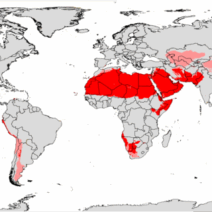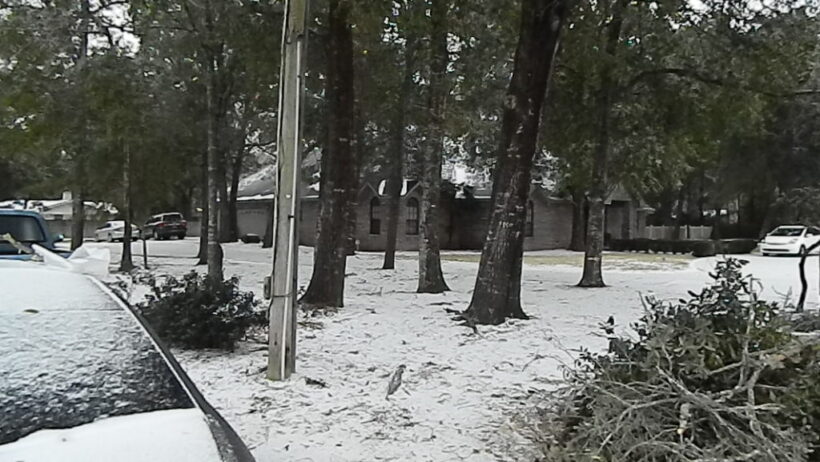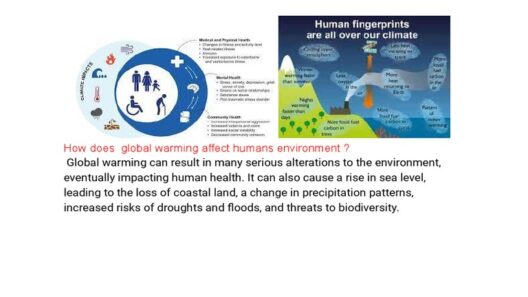Global warming, a pressing issue of our time, has baffled many as it relates to the occurrence of unexpected weather phenomena, particularly snowstorms in regions typically characterized by warmth, such as Florida. The Sunshine State is more commonly associated with sandy beaches and sun-drenched days than with snowflakes. However, as climate change continues to alter weather patterns globally, the question arises: is global warming behind the snowstorms in Florida?
To approach this topic, it is essential to first understand the mechanisms of climate and weather. Climate refers to the long-term average of weather patterns in a particular region, while weather signifies the short-term conditions at a specific time. Global warming indicates an increase in the Earth’s average surface temperature due to rising levels of greenhouse gases, such as carbon dioxide and methane. This warming influences global weather systems and could lead to increased variability in weather patterns, including precipitation forms.
Florida, with its humid subtropical climate, exhibits mild winters where temperatures rarely dip below freezing. Nevertheless, climatic anomalies resulting from global warming have been documented, raising concerns among scientists and meteorologists. The atmosphere’s warming can lead to increased evaporation rates, enriching the air with atmospheric moisture. When cold air masses, often associated with polar regions, collide with this humid air, dramatic temperature contrasts can occur, resulting in unexpected snowfall.
In the past decade, Florida has witnessed sporadic snowfall events, drawing curiosity and concern from residents and researchers alike. Snowfall in Florida is both a meteorological curiosity and a cultural anomaly, as the state rarely experiences conditions conducive to such winter weather. The infrequent weather patterns are a reminder that climate change can produce irregular occurrences in weather that challenge our expectations.
One of the pivotal phenomena tied to global warming is the polar vortex, a concept that has gained significant attention in recent years. The polar vortex comprises powerful winds that circulate around the Arctic, helping to contain frigid air. However, as the Arctic warms—experiencing temperature increases at a rate approximately twice that of the global average—the polar vortex can weaken. This weakening allows frigid air to spill southward into regions not accustomed to such extremes, including Florida. Thus, while Florida may experience temperatures that are typically higher, anomalies resulting from the shifting polar vortex can introduce unexpected winter weather.
Furthermore, it is crucial to examine the ocean’s role in climate patterns. The Gulf of Mexico, located just south of Florida, acts as a massive reservoir of heat and energy. Changes in sea surface temperatures can influence weather patterns dramatically. Warmer oceans contribute to enhanced moisture levels in the atmosphere, providing the fuel for storms. When this tropical moisture meets cold air masses descending from the north, conditions for snow can arise, even in places where such events are misdemeanors.
There are historical precedents that illustrate this phenomenon. For example, in January 2010, northern Florida experienced significant snowfall, leaving residents in disbelief. At the time, climatologists suggested that the extreme weather was linked to a complex series of climate dynamics, which were illuminated by escalating global temperatures. These instances serve as empirical evidence that contrarian weather events can stem from a warming planet.
Yet, it is crucial to acknowledge that snowstorms in Florida are still relatively rare occurrences. While climate change may contribute to the conditions that allow for these anomalies, it does not transform Florida into a snowy landscape. Instead, the reality is that climate change introduces a new layer of unpredictability to weather patterns. The future may bring more frequent and intense weather phenomena across the United States, including Florida’s unique climate.
As we continue to grapple with the implications of global warming, the dialogue surrounding weather events like Florida’s infrequent snowstorms must be nuanced. Climate change doesn’t merely forge a direct line from warming temperatures to snowfall. It’s a web of interactions among the atmosphere, oceans, and terrestrial environments. Therefore, understanding these intricate relationships is vital for developing effective strategies in responding to a changing climate.
In contemplating the future, it is imperative that individuals take action in their daily lives to mitigate the impacts of climate change. This might include reducing carbon footprints, supporting renewable energy initiatives, and advocating for policies aimed at overcoming dependency on fossil fuels. Through collective action, there lies the potential to influence climatic trajectories. The phenomenon of snow in Florida could serve not only as a reminder of the unpredictable nature of climate change but also as a rallying point for communities to engage in meaningful discussions about environmental stewardship.
In conclusion, while it may be tempting to attribute snowstorms in Florida solely to global warming, this complex issue invites a more layered examination of our planet’s climate systems. Events such as these are likely to become increasingly common as climate continues to shift, leading us to reconsider our assumptions about weather and climate variability. Embracing this shift in perspective can inspire curiosity and motivate proactive engagement with one of the most critical challenges of our time—climate change.








